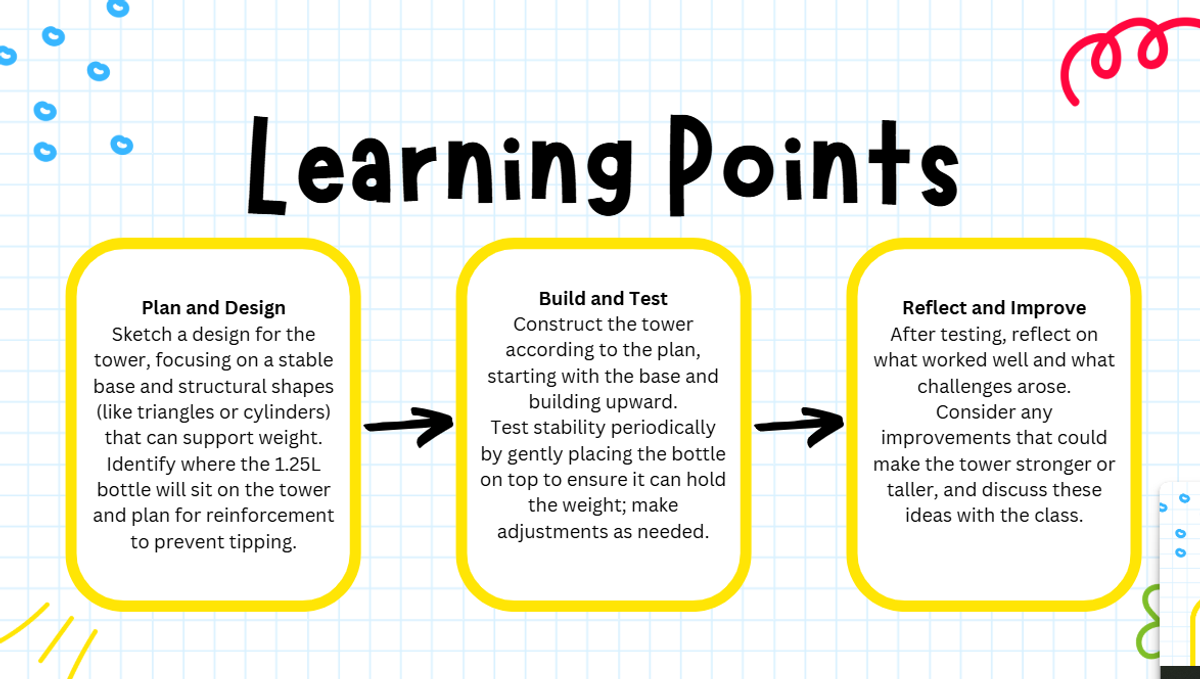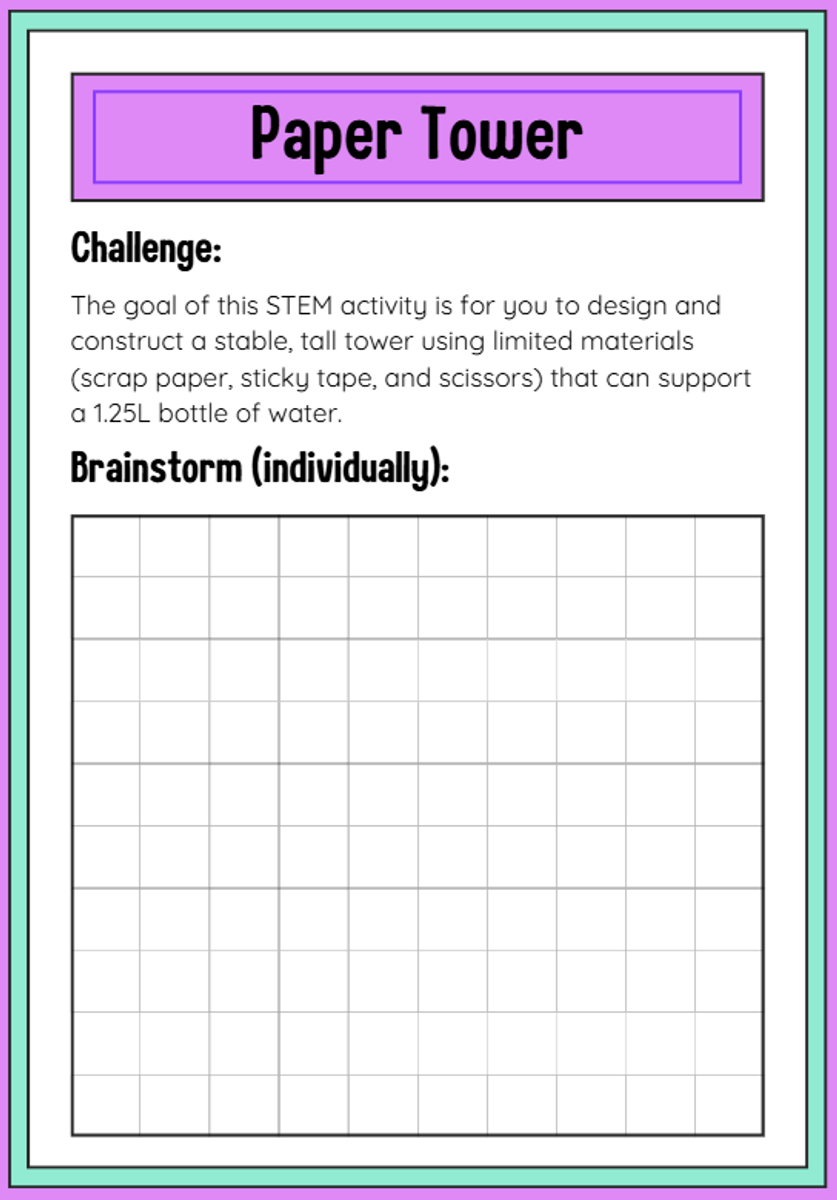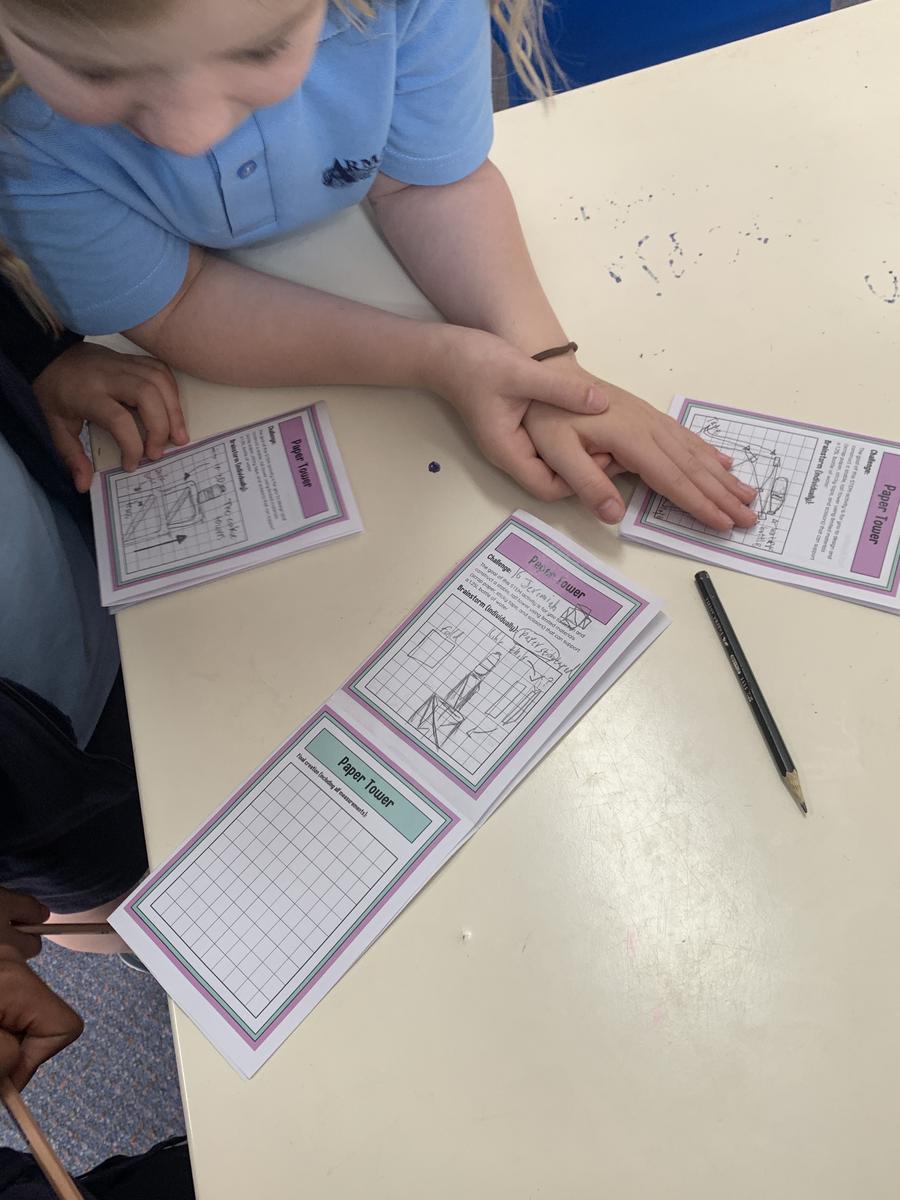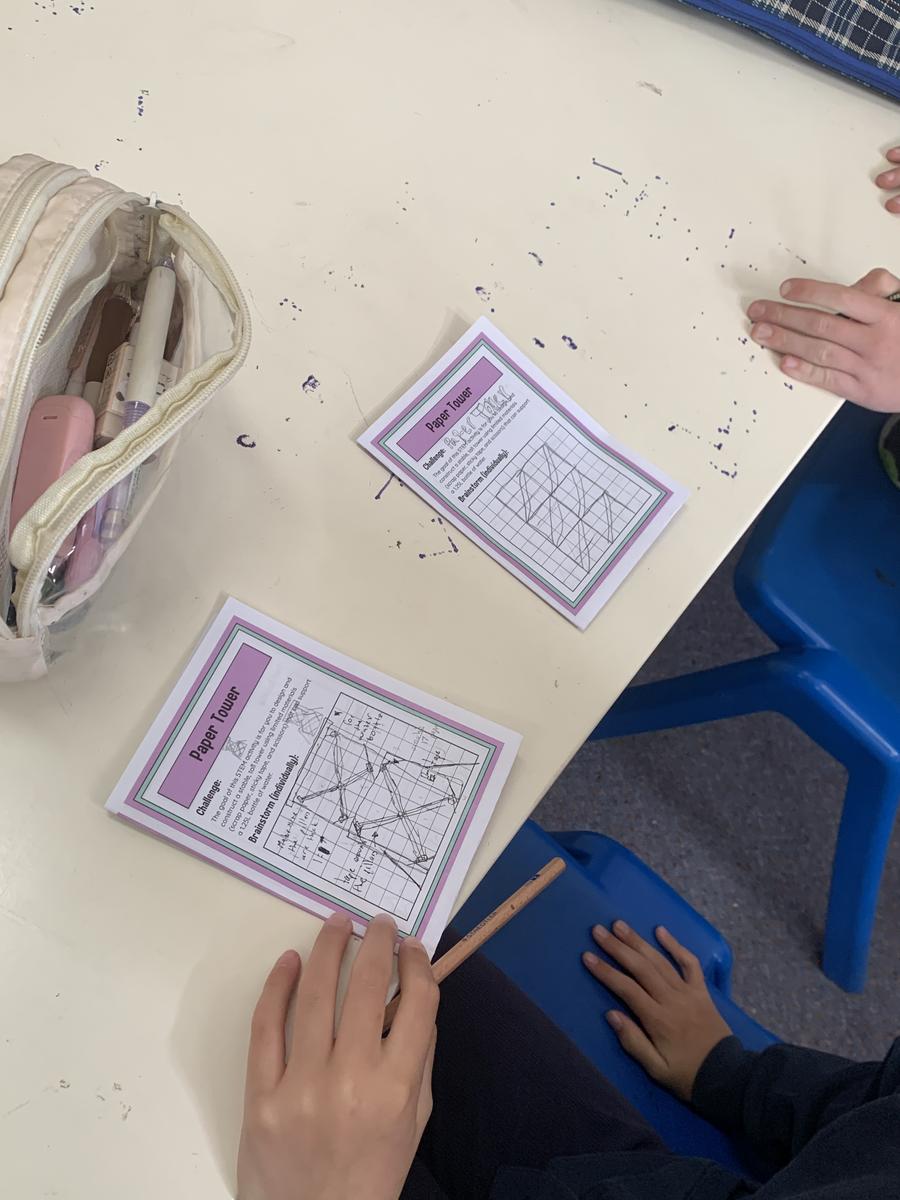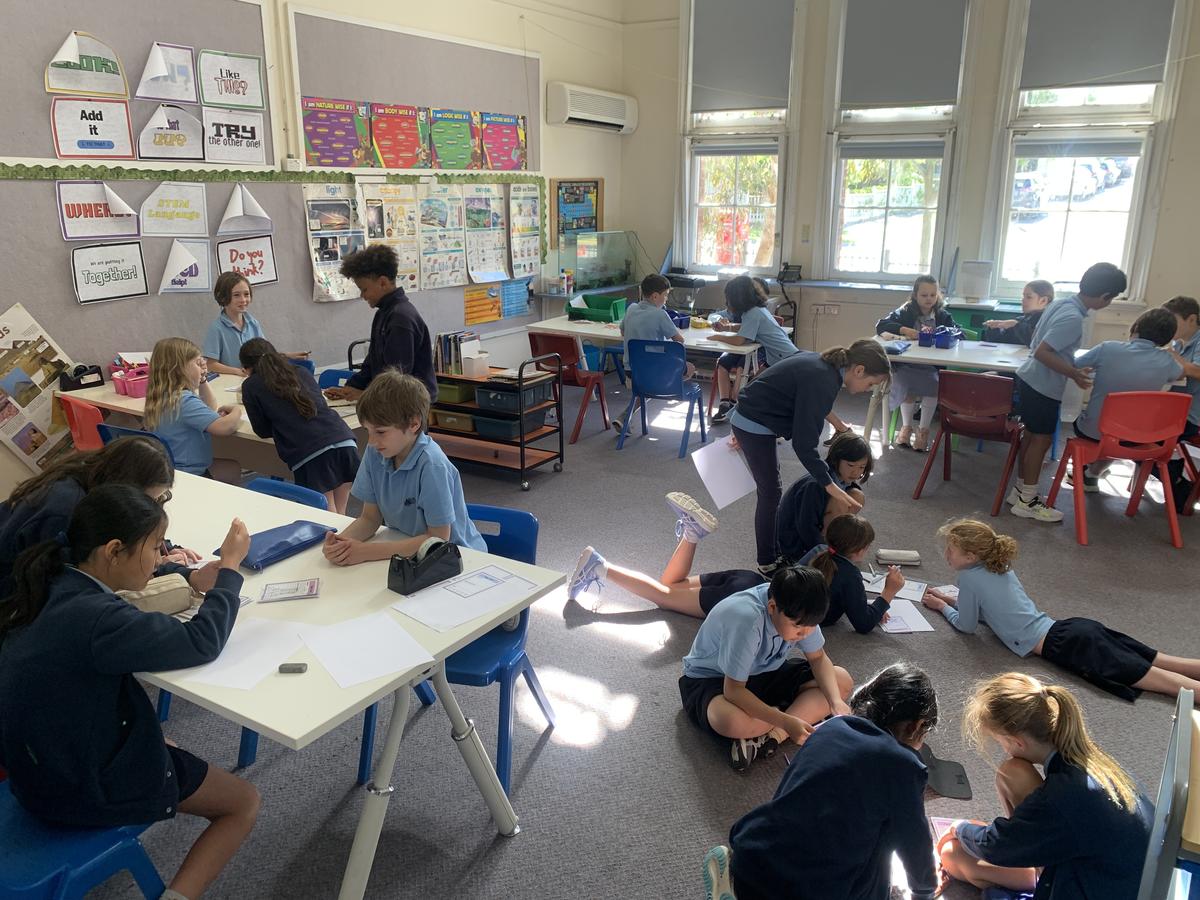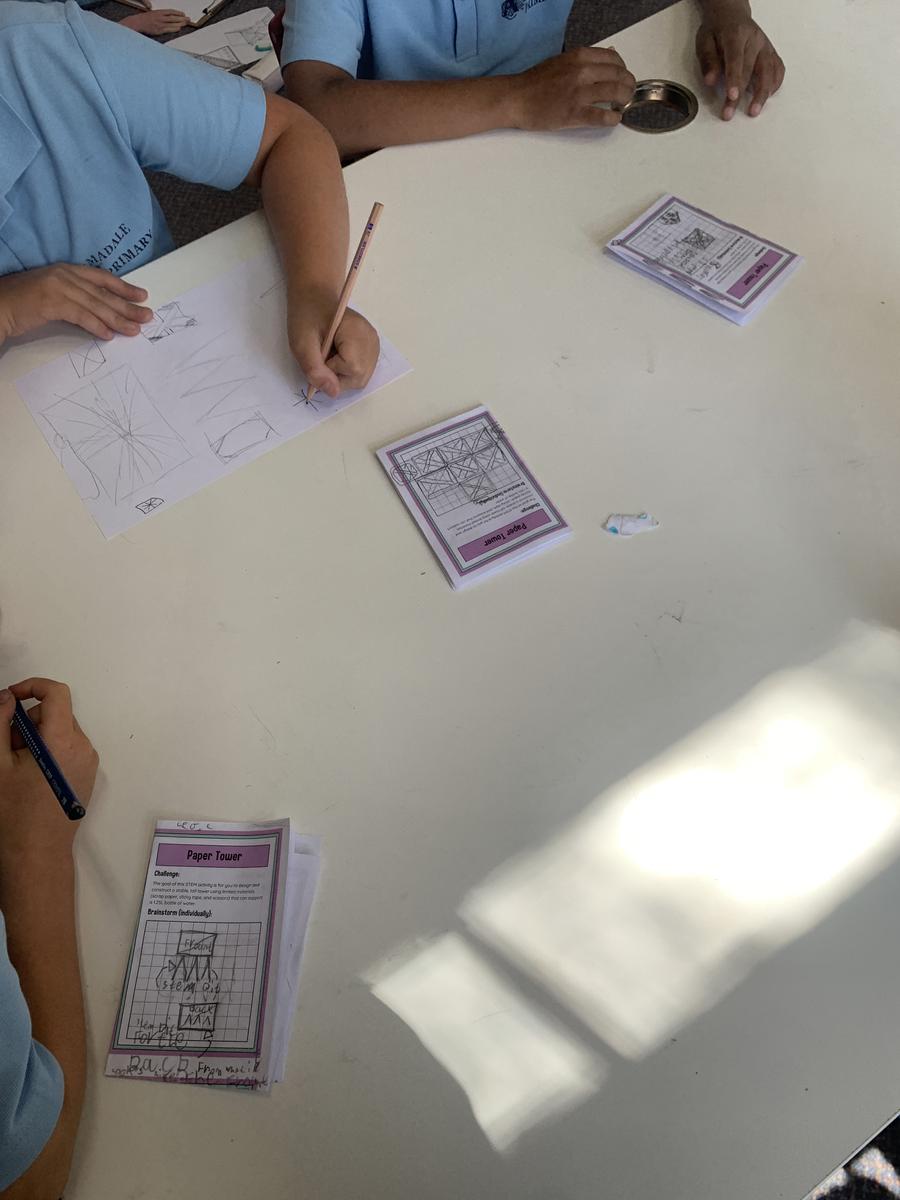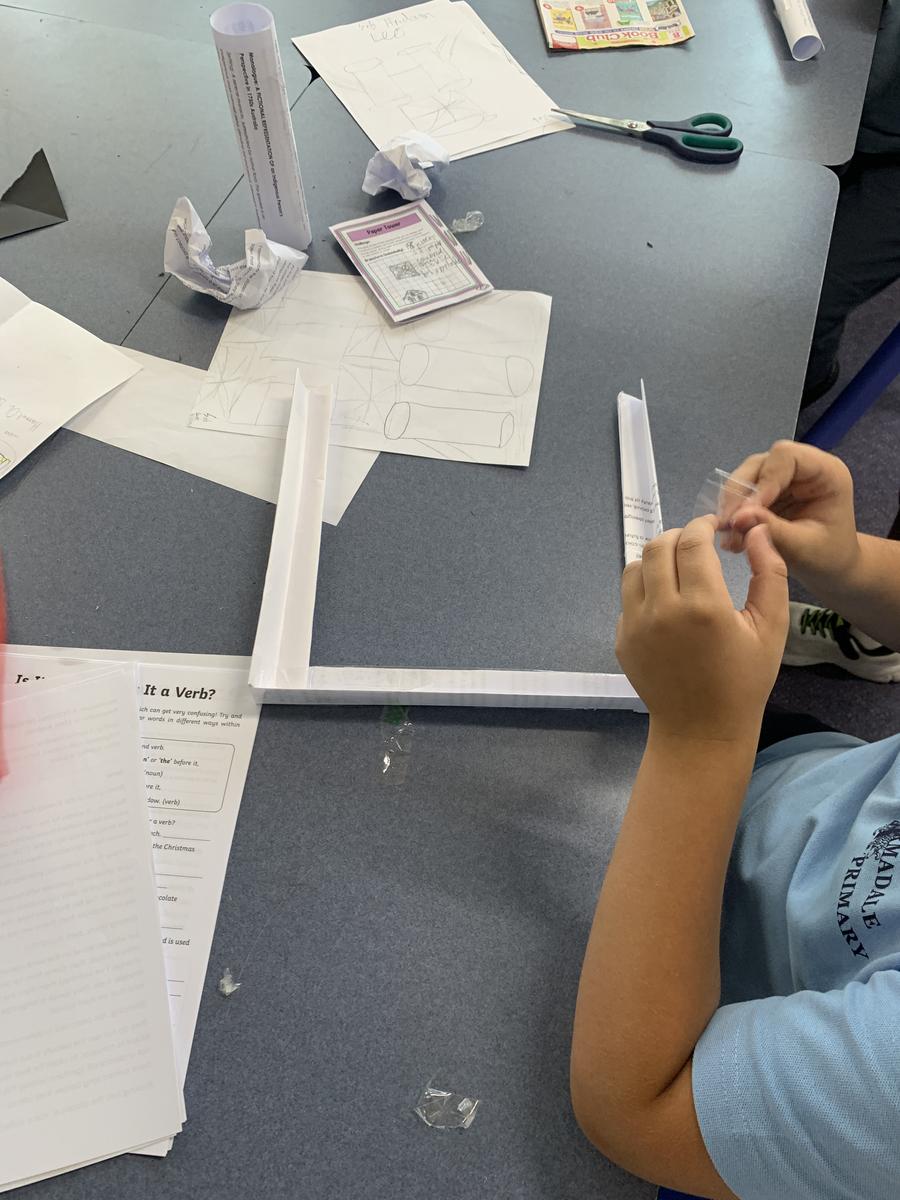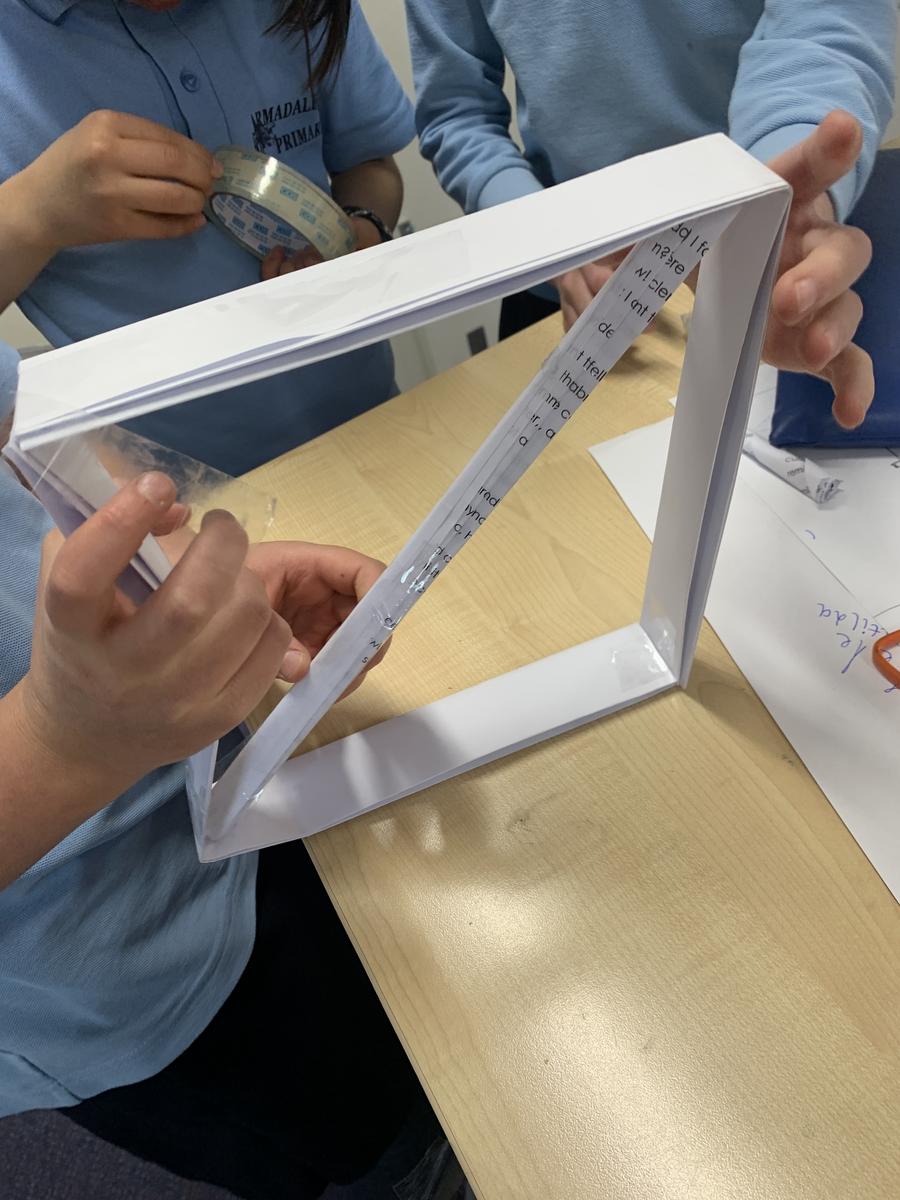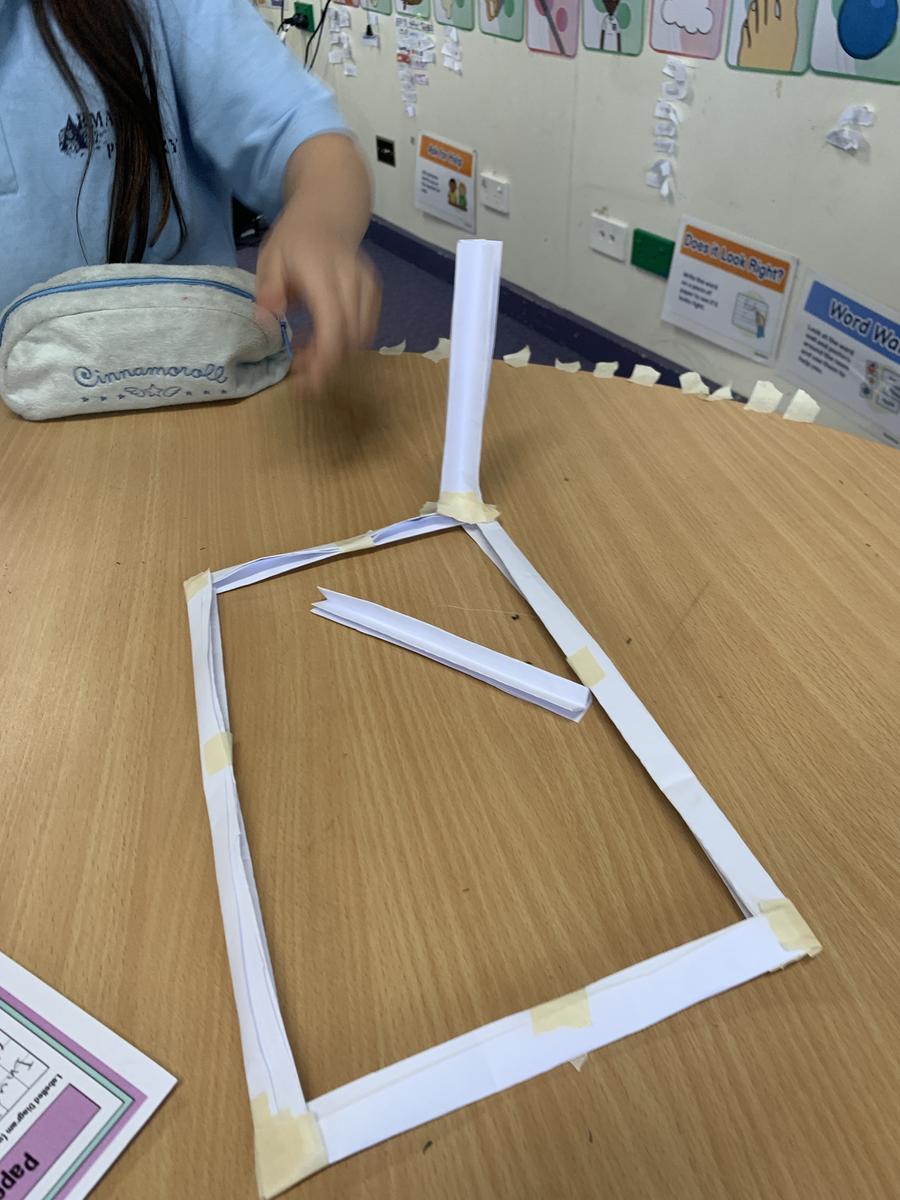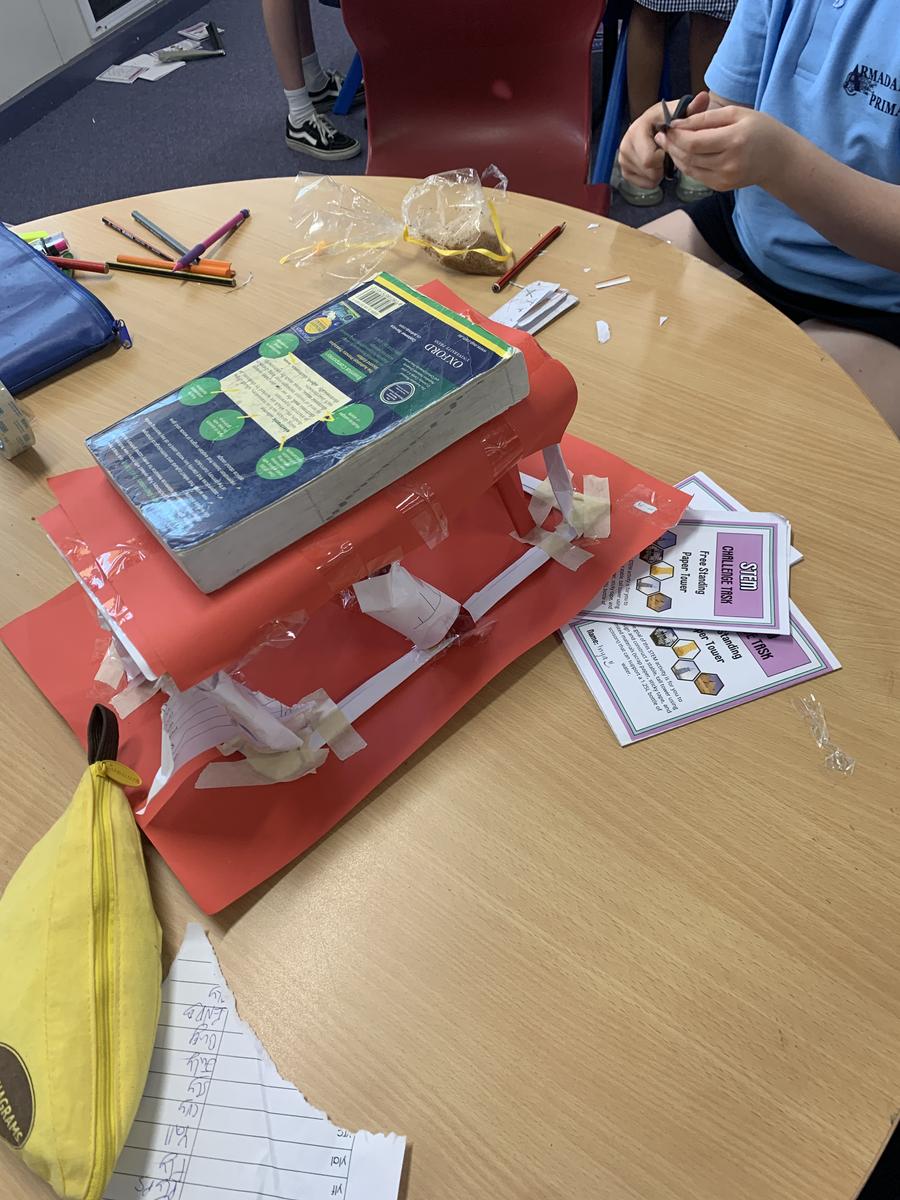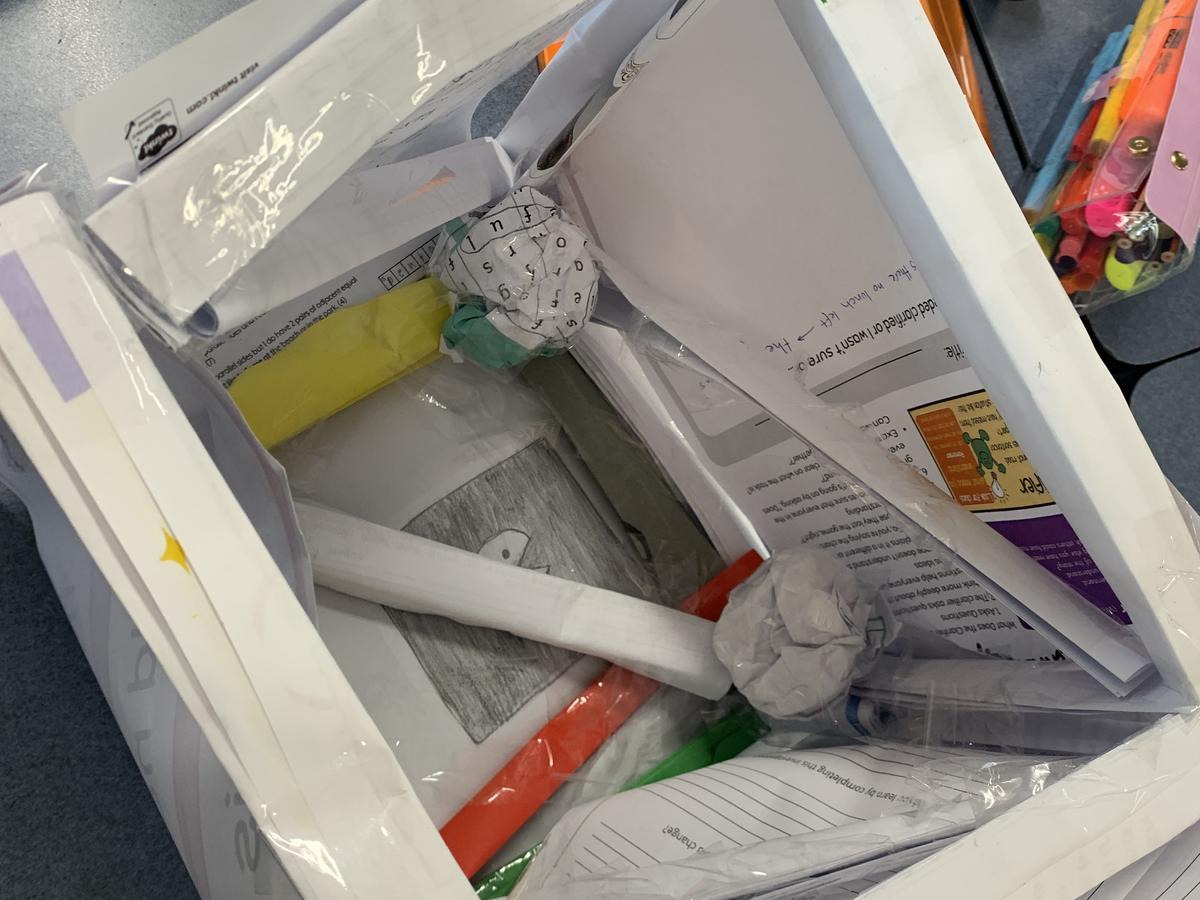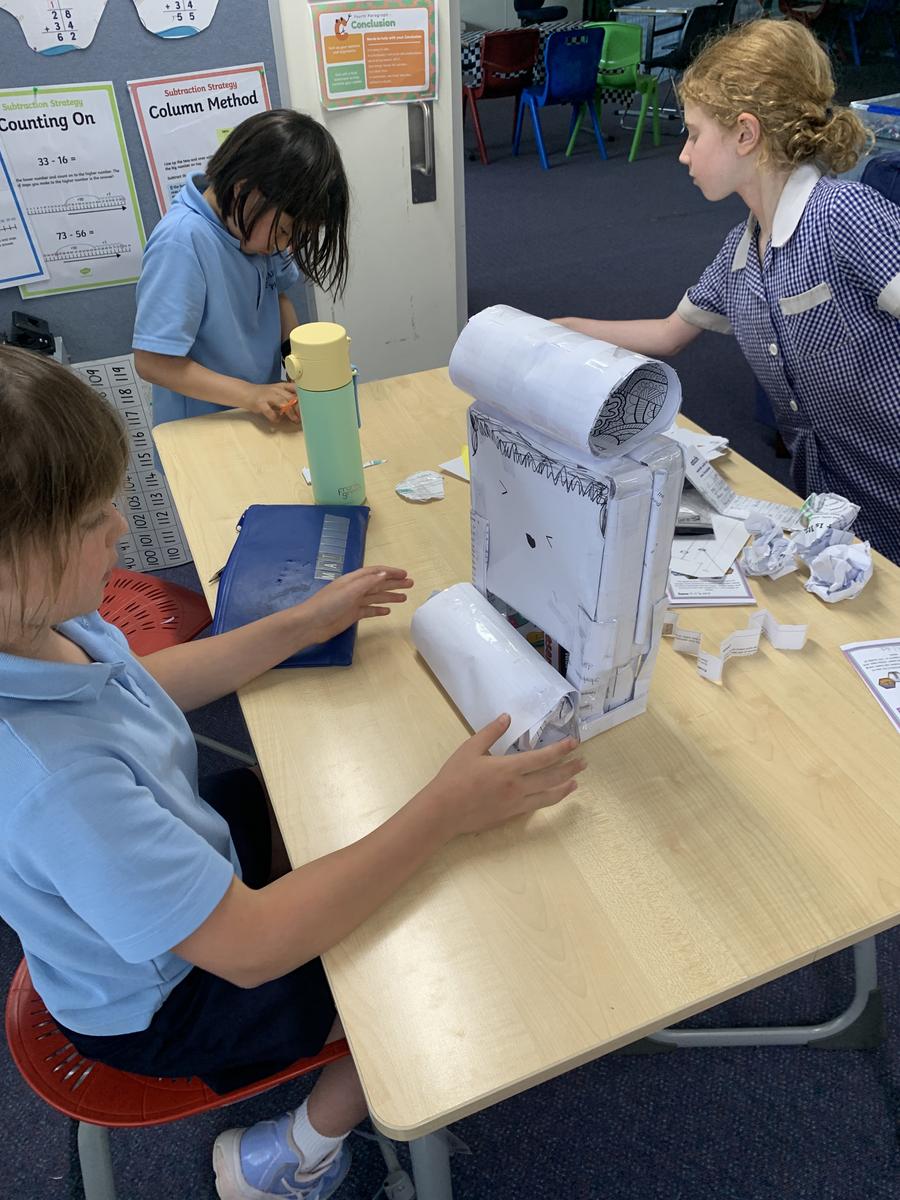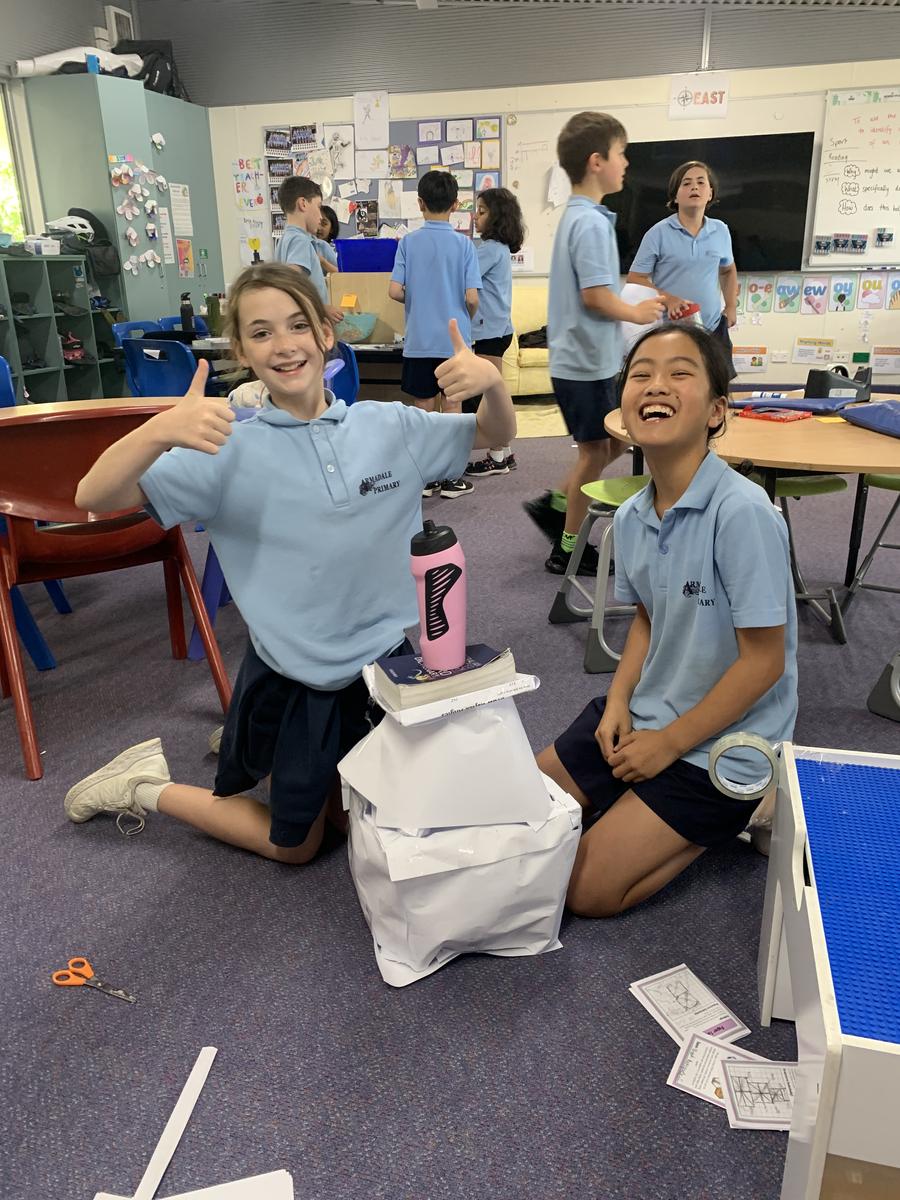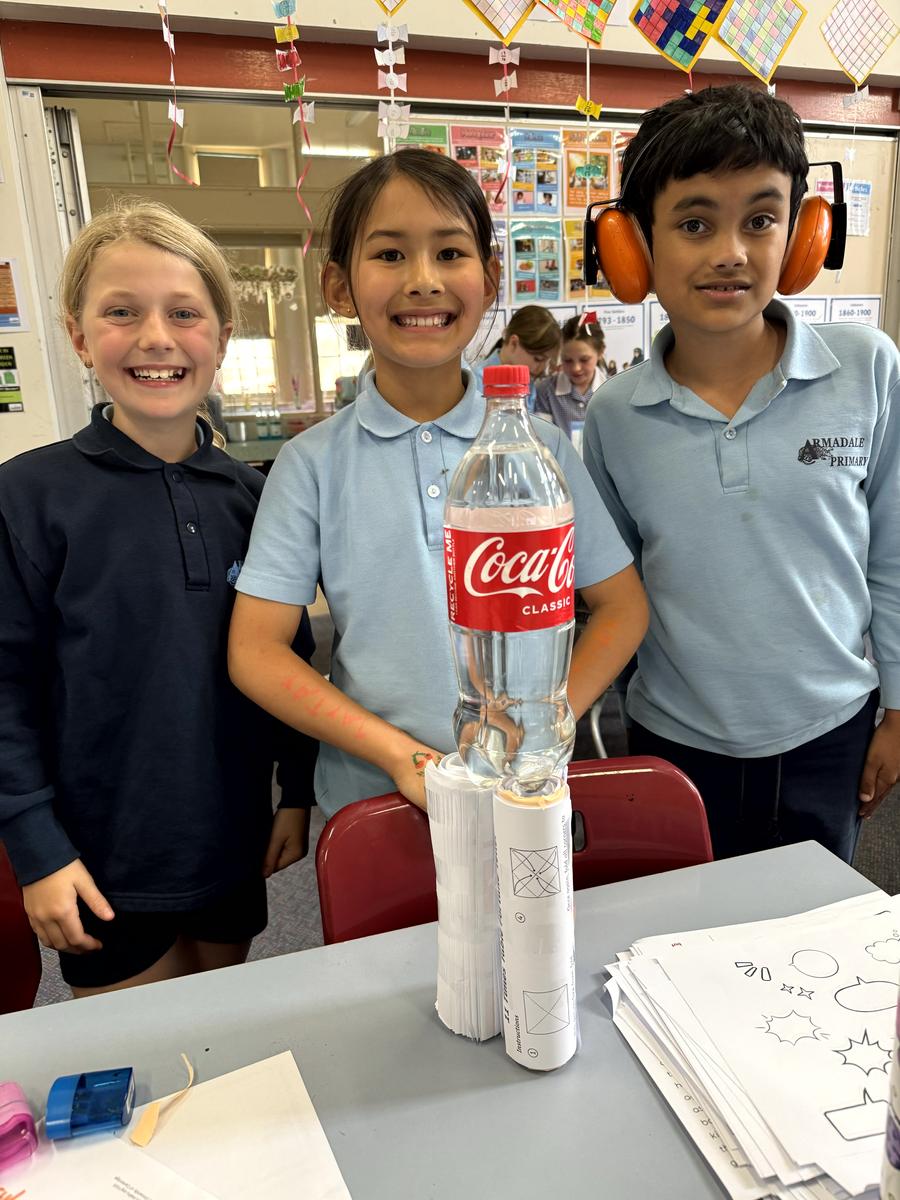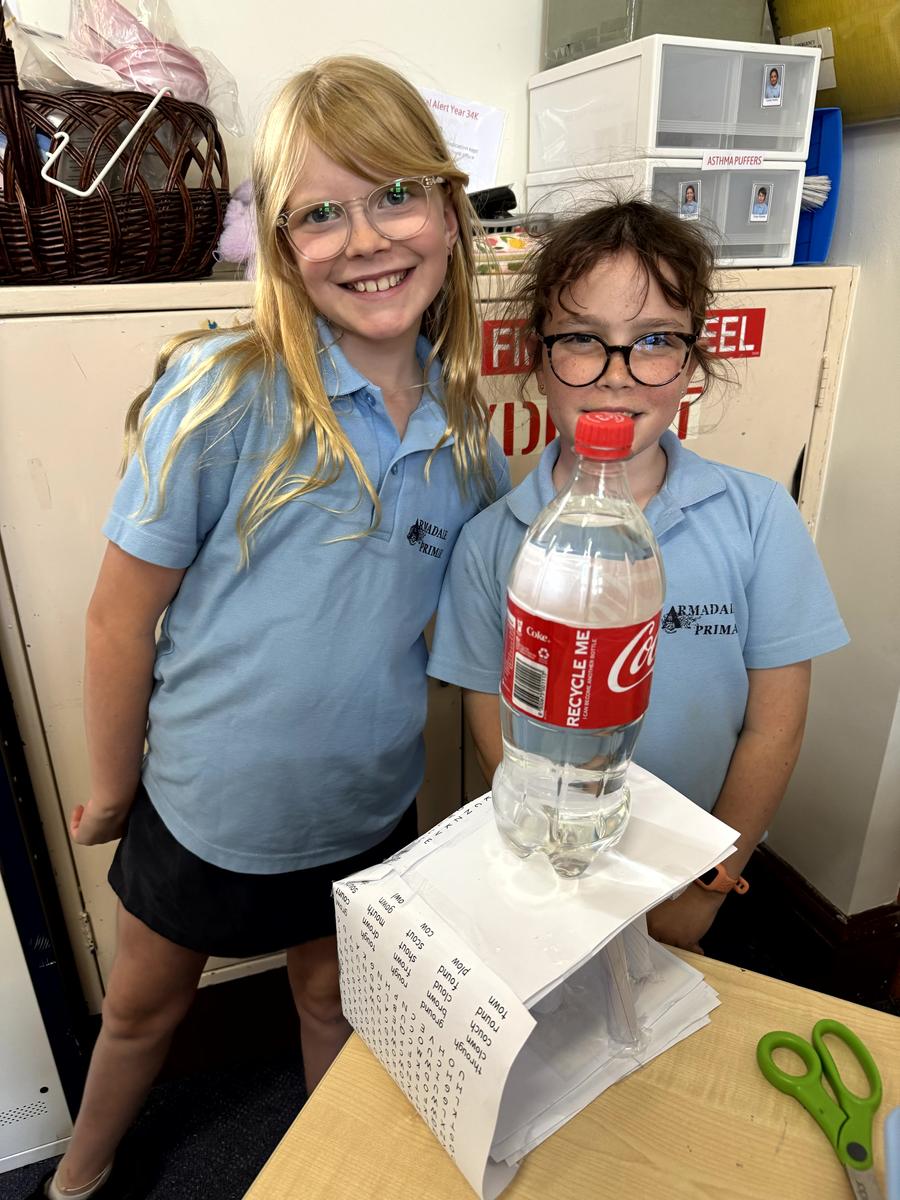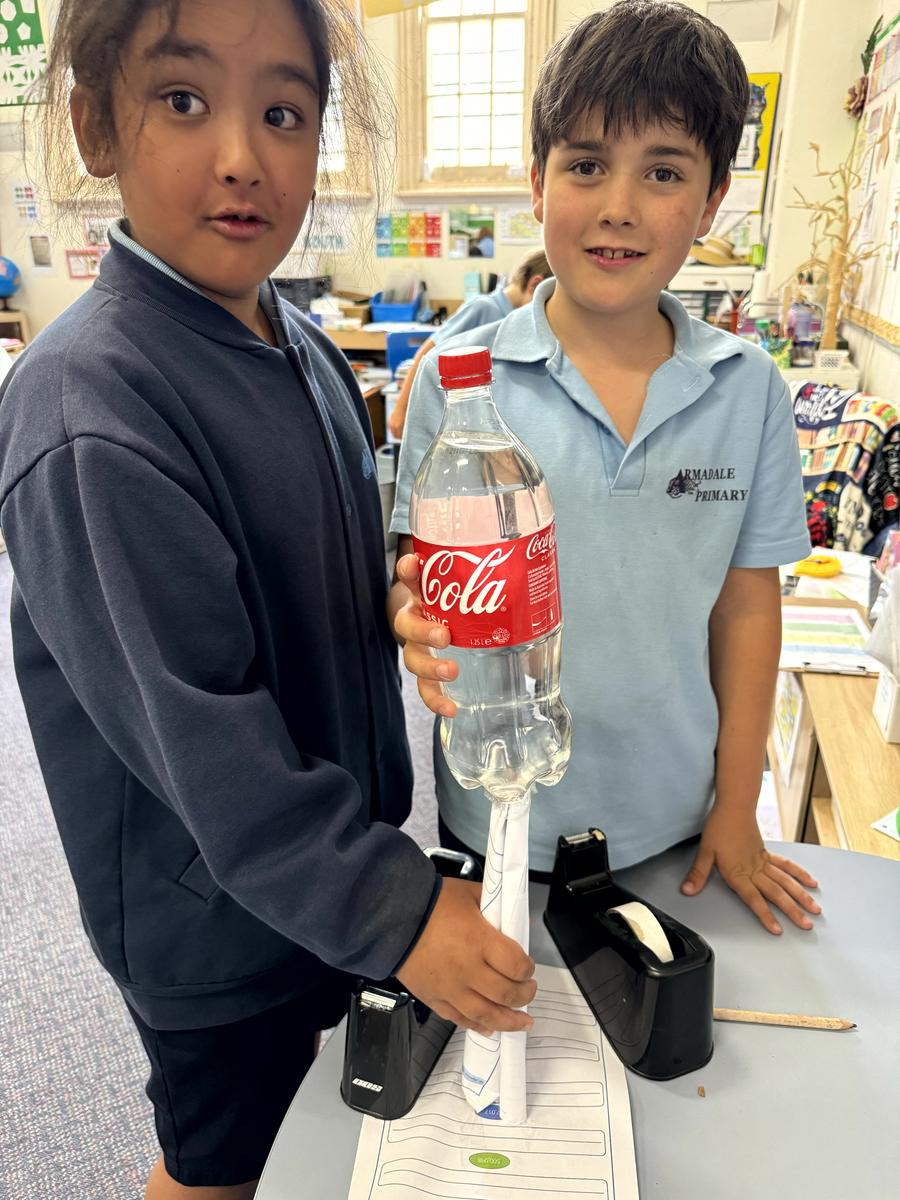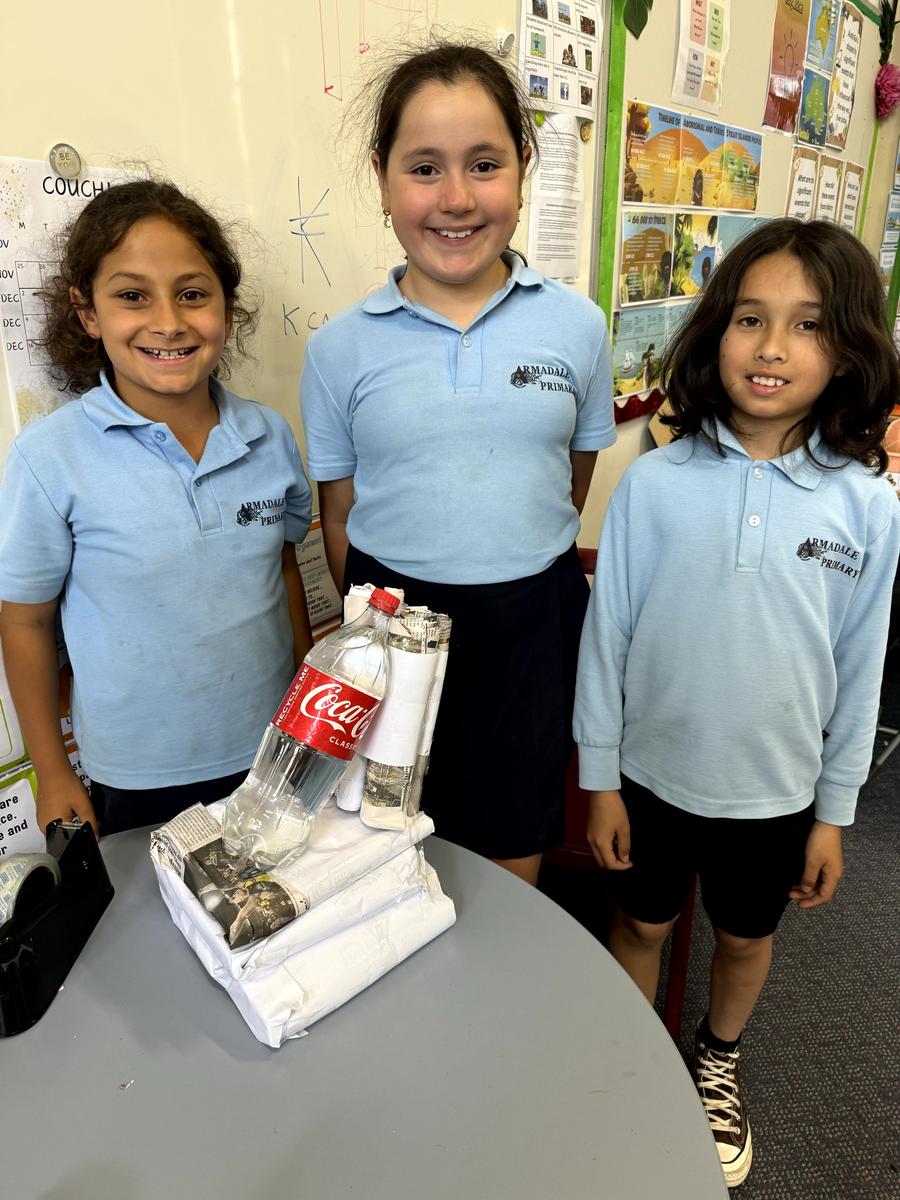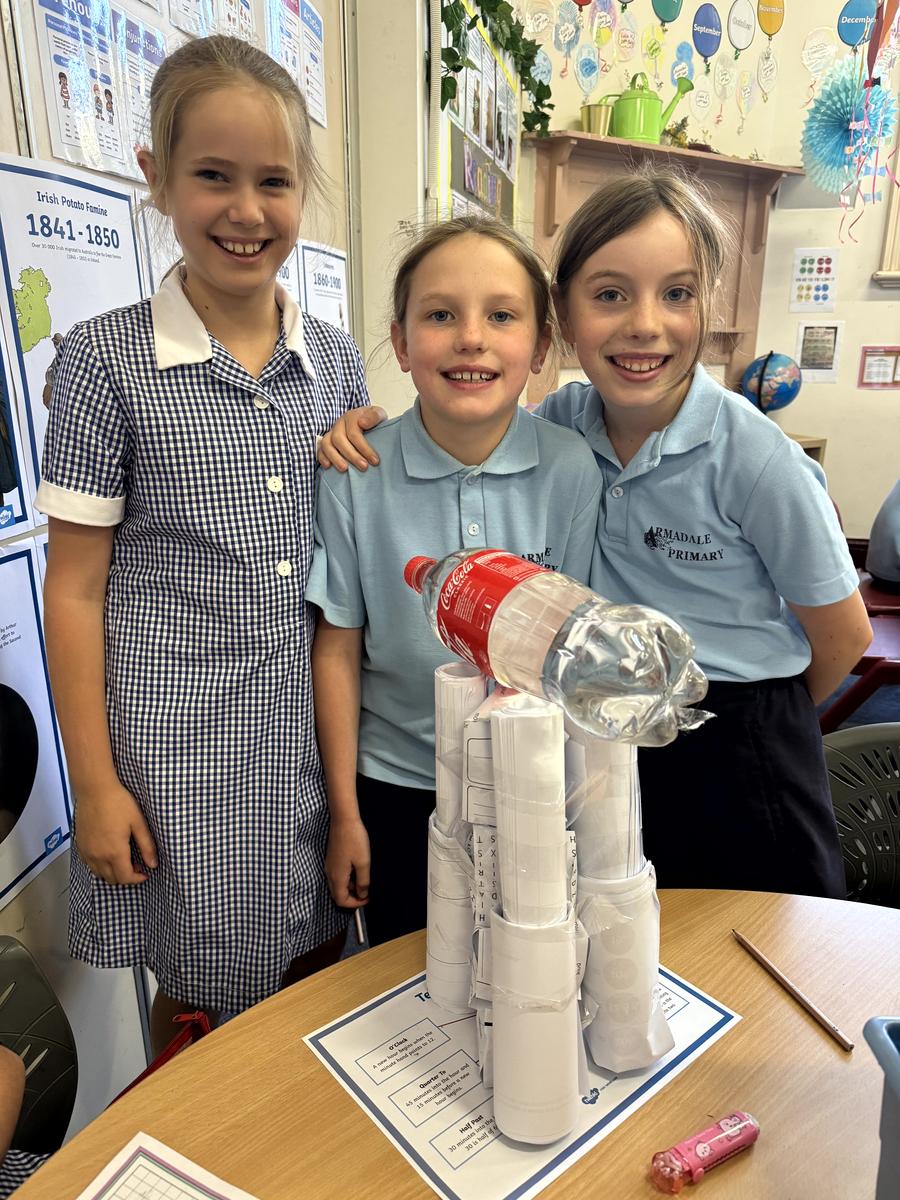Year 3/4 Bulletin
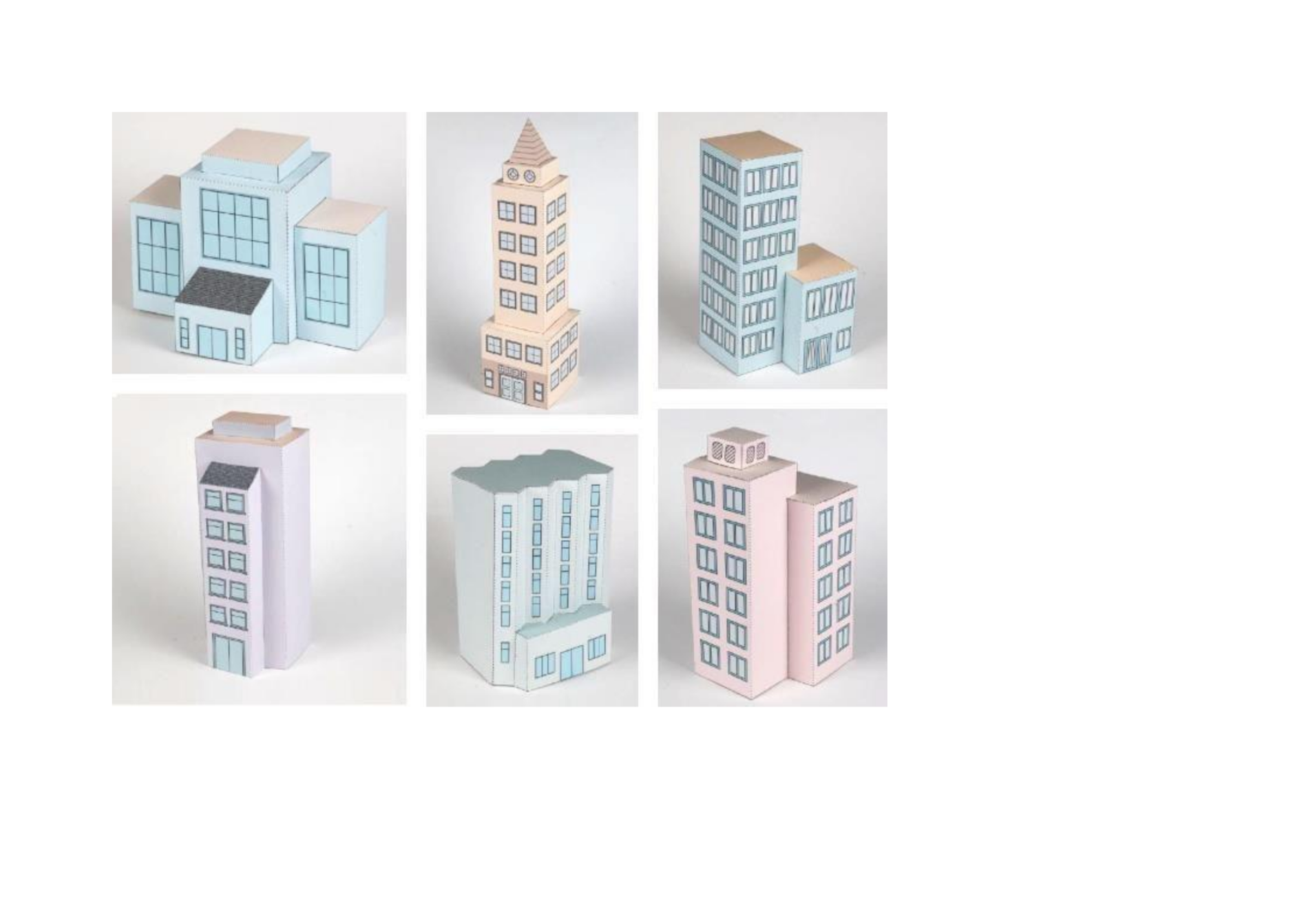
Task:
Recently, the grade 3/4’s participated in an
exciting hands-on STEM challenge as part of
their design and technology learning. The task
involved constructing the tallest possible tower
using only scrap paper, sticky tape, and scissors.
The goal was for the tower to be freestanding
and strong enough to support a 1.25L bottle of
water. Over three sessions, students planned
their designs, built and tested their towers, and
presented their creations to the class. They
reflected on the strengths and challenges of their
designs and discussed improvements they could
make in the future. This activity helped students
develop critical skills such as problem-solving,
creativity, and resilience, while deepening their
understanding of structural stability and the
engineering process.
First session (whole):
In the first session, students were introduced to the concept of structural stability and strength. They explored different shapes and designs, such as triangles and wide bases, that contribute to strong and stable structures. Students sketched and labeled their plans for a tower, considering how to balance height, stability, and the placement of the 1.25L bottle. Students were split into random groups and then individually sketched what their tower might look like after watching a video focusing on structure, strength, and “trusses”. Once they brainstormed, they came together in their groups and came to a consensus design that would work for everyone.
Second session (small):
In the second session, students began building their towers based on their initial plans. As they worked, they engaged in discussions about their designs, exploring how their structures might look and function. Through collaboration and testing, they made adjustments to improve stability and strength, often reaching compromises to address challenges they encountered. This hands-on process allowed students to apply their understanding of structural stability, adapt their plans as needed, and develop problem-solving skills in real time.
Third session (whole):
In the final session, students gathered in a circle to present and test their towers. Each group had the opportunity to share their design, explain their decision-making process, and describe any challenges they overcame. They were then given time to carefully balance their structures and test their stability using progressively heavier objects: counters, a water bottle, and then books with a heavy sticky tape dispenser. Every structure successfully supported at least one object, and many achieved the full challenge, showcasing the students’ creativity, problem-solving, and resilience.
Purpose of the lesson:
The purpose of the lesson was to engage students in hands-on learning to explore principles of structural stability and strength, while implementing problem-solving, critical thinking, and creativity.
Where to take this learning further:
To extend this learning at home, encourage your child to explore building structures using everyday materials such as cardboard, plastic cups, or building blocks. Challenge them to create a structure that can support a household object, like a small book or a can of food, while discussing what makes their design stable and strong. You can also watch videos or read books about famous structures like the Eiffel Tower or Sydney Harbour Bridge to inspire their curiosity about engineering and design. These activities will reinforce the concepts of stability, creativity, and problem-solving.
Allira, Richard and Roula
Year 3/4 Team
Allira.Zeneli@education.vic.gov.au

